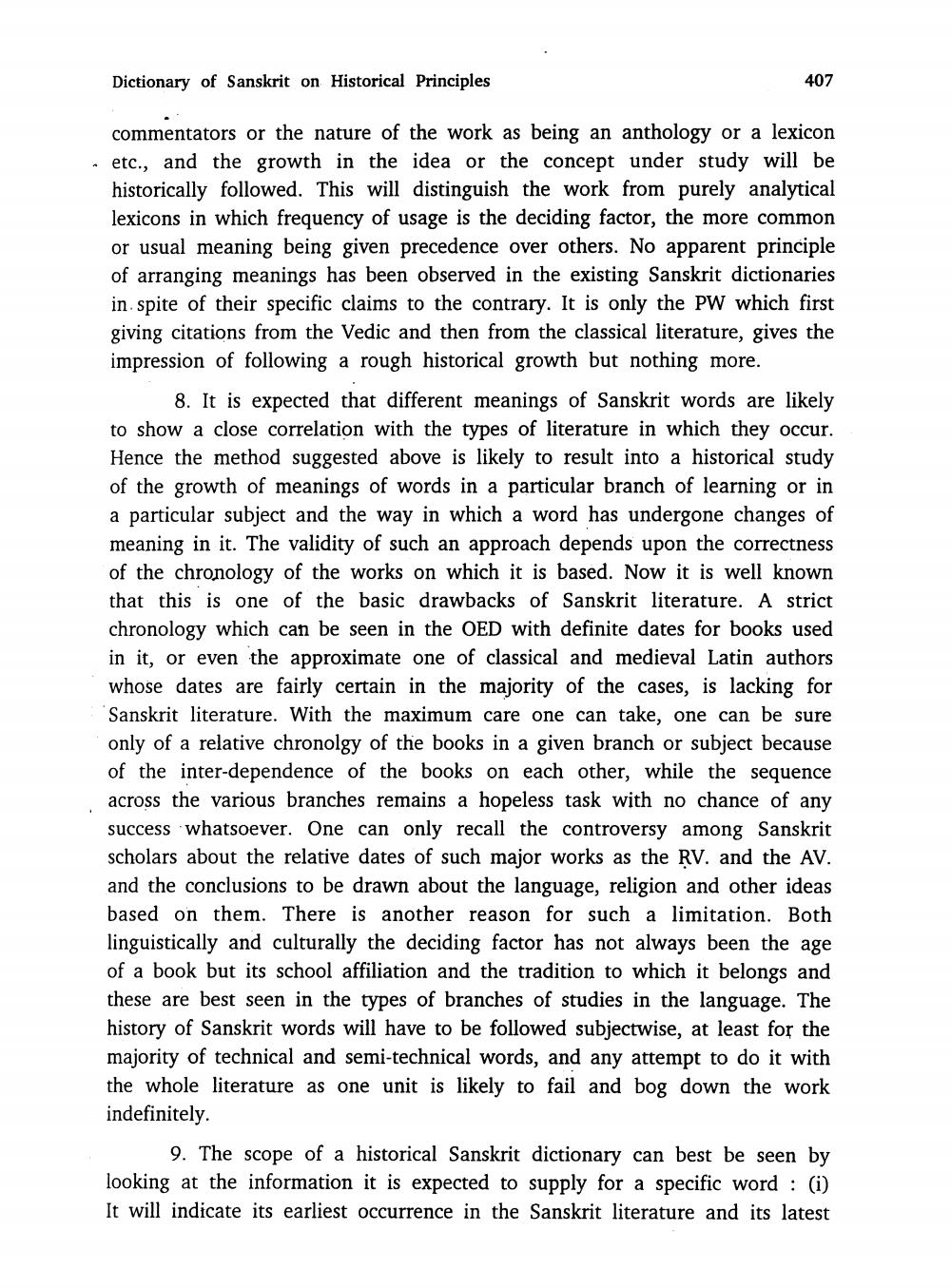________________
Dictionary of Sanskrit on Historical Principles
commentators or the nature of the work as being an anthology or a lexicon etc., and the growth in the idea or the concept under study will be historically followed. This will distinguish the work from purely analytical lexicons in which frequency of usage is the deciding factor, the more common or usual meaning being given precedence over others. No apparent principle of arranging meanings has been observed in the existing Sanskrit dictionaries. in spite of their specific claims to the contrary. It is only the PW which first giving citations from the Vedic and then from the classical literature, gives the impression of following a rough historical growth but nothing more.
407
8. It is expected that different meanings of Sanskrit words are likely to show a close correlation with the types of literature in which they occur. Hence the method suggested above is likely to result into a historical study. of the growth of meanings of words in a particular branch of learning or in a particular subject and the way in which a word has undergone changes of meaning in it. The validity of such an approach depends upon the correctness of the chronology of the works on which it is based. Now it is well known that this is one of the basic drawbacks of Sanskrit literature. A strict chronology which can be seen in the OED with definite dates for books used in it, or even the approximate one of classical and medieval Latin authors. whose dates are fairly certain in the majority of the cases, is lacking for Sanskrit literature. With the maximum care one can take, one can be sure only of a relative chronolgy of the books in a given branch or subject because of the inter-dependence of the books on each other, while the sequence across the various branches remains a hopeless task with no chance of any success whatsoever. One can only recall the controversy among Sanskrit scholars about the relative dates of such major works as the RV. and the AV. and the conclusions to be drawn about the language, religion and other ideas based on them. There is another reason for such a limitation. Both linguistically and culturally the deciding factor has not always been the age of a book but its school affiliation and the tradition to which it belongs and these are best seen in the types of branches of studies in the language. The history of Sanskrit words will have to be followed subjectwise, at least for the majority of technical and semi-technical words, and any attempt to do it with the whole literature as one unit is likely to fail and bog down the work indefinitely.
9. The scope of a historical Sanskrit dictionary can best be seen by looking at the information it is expected to supply for a specific word: (i) It will indicate its earliest occurrence in the Sanskrit literature and its latest




